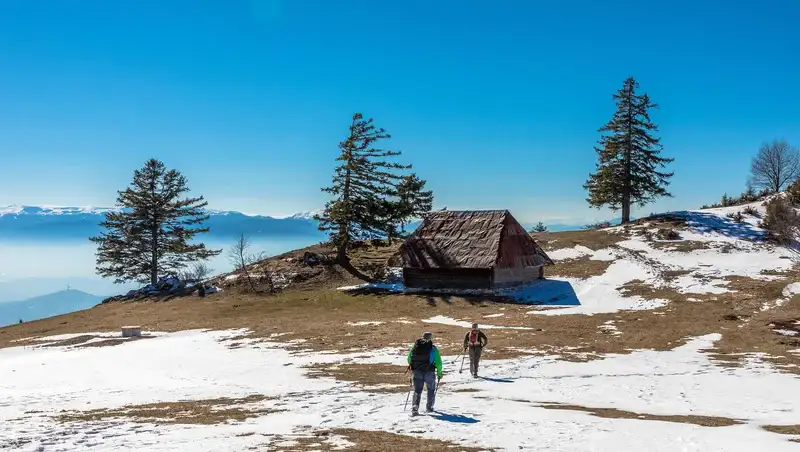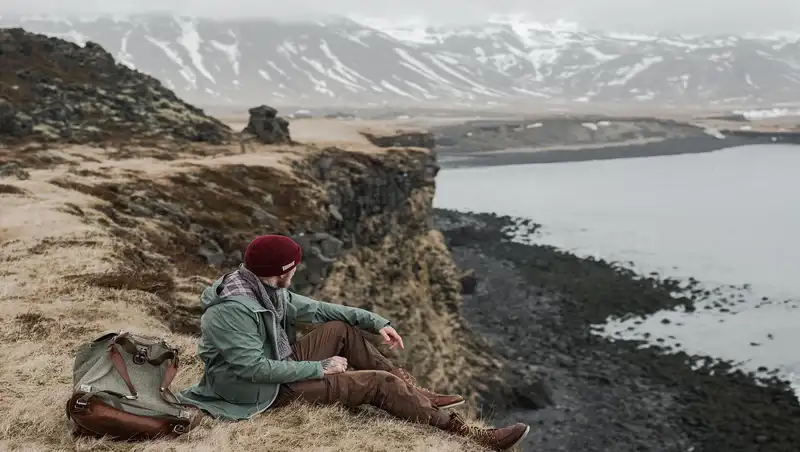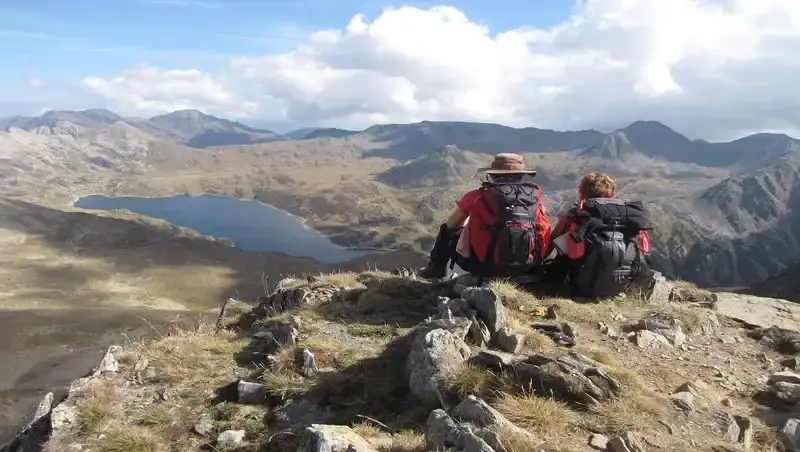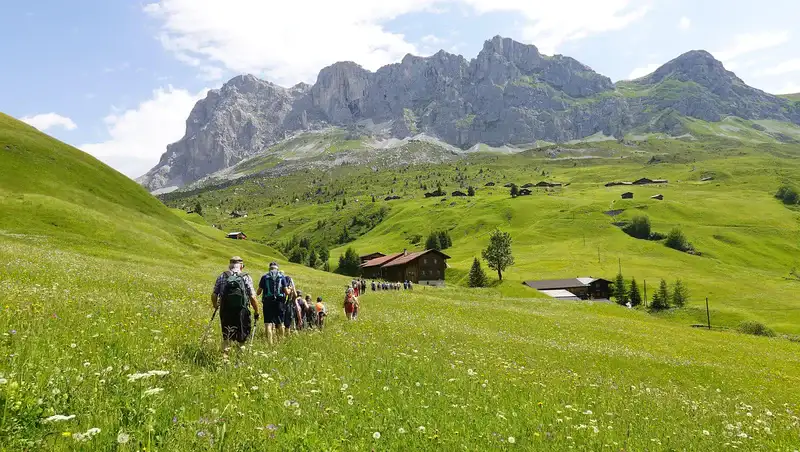Thru-hiking, the act of trekking long-distance trails like the Pacific Crest Trail (PCT) or Appalachian Trail (AT) over months, is a monumental physical and mental challenge. It transforms hikers into endurance athletes, pushing their bodies to adapt in extraordinary ways.

In 2021, Dr. Edward Weiss, a physiology professor, set out to explore a pressing question: What does a five-month thru-hike do to the human body?
By meticulously tracking health metrics before and after his PCT journey, Weiss uncovered fascinating insights into the benefits and risks of extreme hiking.
Alongside his study, another hiker, Thomas Heinbachle, conducted a similar analysis in 2019, offering a broader perspective.
This article reimagines their findings, and explores the dual nature of thru-hiking’s impact on health.
The Physical Demands of Thru-Hiking
A Unique Physiological Stress
Thru-hiking is unlike any other activity. Hikers cover 15–20 miles daily, often climbing steep terrain with heavy backpacks, burning up to 5000 calories a day. This intense energy expenditure places the body in a state of constant adaptation, akin to that of an elite endurance athlete.
However, the prolonged stress and caloric deficit can trigger survival mechanisms, prioritizing vital functions while sidelining others.
Energy Deficiency and System Shutdown
When calorie intake fails to match expenditure, the body depletes fat reserves and may begin breaking down muscle and bone. Non-essential systems, such as reproduction, are temporarily suppressed. For example:
- Women may experience amenorrhea (cessation of menstrual cycles).
- Men may see reduced testosterone and sperm production.
This adaptive response ensures survival but raises questions about long-term health consequences.

The Hidden Costs of Thru-Hiking
Bone Density Loss: An Alarming Discovery
One of the most striking findings from Weiss’s study was an 8.5% reduction in spinal bone mineral density after his PCT hike. For context, the average person loses only 0.5% annually due to aging
This rapid loss is comparable to:
- Aging 15–20 years in just five months.
- The bone deterioration astronauts experience during 2–4 weeks in microgravity.
Heinbachle’s 2019 study reported a 5% loss, and another case study noted a 3.8% decrease. These figures challenge the assumption that weight-bearing exercise like hiking inherently strengthens bones.
In caloric deficit, the body may break down bone to supply minerals for critical functions, halting bone remodeling, the process of replacing old bone with new.
Long-Term Concerns
Astronaut studies reveal a sobering reality: over half of those studied never fully regained baseline bone density, even with advanced rehabilitation.
Thru-hikers face similar risks, as inadequate nutrition and recovery can exacerbate bone loss, potentially increasing the likelihood of osteoporosis later in life.
Muscle Mass and “T-Rex Syndrome”
Thru-hikers often lose significant muscle mass, particularly in the upper body, due to the focus on lower-body endurance. This phenomenon, jokingly called “T-Rex syndrome,” results in a lean, wiry physique.
Combined with bone density loss, reduced muscle mass heightens the risk of overuse injuries.
Injury Risks
Surveys highlight the physical toll of thru-hiking:
- A 2018–2019 Appalachian Trail Conservancy survey of over 2200 hikers found the following: i) 28% reported chronic overuse injuries (e.g., tendinitis, stress fractures). ii) 18% experienced acute injuries (e.g., sprains, falls).
- A 2024 survey by The Trek of 400 AT hikers revealed that 54% reported injuries, with 60% of these impacting their ability to continue hiking.
Comparatively, only 30% of marathon runners report injuries during training, likely due to better recovery conditions (nutritious meals, restful sleep, and rest days).
Thru-hikers, sleeping on uneven ground in cramped tents, face greater recovery challenges.

The Silver Lining: Health Benefits of Thru-Hiking
Cardiovascular and Respiratory Gains
Thru-hiking transforms the body into an endurance machine, yielding significant cardiovascular and respiratory benefits:
- Heart Efficiency: The heart, a muscle, grows stronger, increasing stroke volume (blood pumped per beat). This lowers resting heart rate, a hallmark of endurance athletes.
- Arterial Health: Arteries become more elastic, improving blood flow and oxygen delivery. Capillary networks expand, enhancing nutrient transport to muscles and organs.
- Red Blood Cell Count: Increased red blood cells improve oxygen-carrying capacity.
VO2 Max: A Key to Longevity
VO2 max, the maximum oxygen the body can utilize during exercise, is a strong predictor of lifespan and health span. Endurance activities like thru-hiking boost VO2 max significantly.
A meta-analysis of 41 clinical trials found that endurance training increased VO2 max by 16.3%, with greater gains over 20 weeks, roughly the duration of a thru-hike.
While direct studies on hikers are lacking, these findings suggest thru-hiking could enhance long-term health.
Recovery Potential
Unlike astronauts, thru-hikers may have a better chance of recovering lost bone and muscle. Weiss’s follow-up tests at 8 and 12 months post-hike showed his bone density, muscle mass, and body weight returning to baseline.
This resilience suggests that, with proper post-hike nutrition and rest, many negative effects may be temporary.
Other Physiological Changes
Skin and Environmental Stress
Thru-hikers face relentless environmental challenges:
- Blisters and Calluses: Constant friction from hiking boots leads to toughened skin.
- Fungal Infections: Athlete’s foot thrives in damp, sweaty conditions.
- Sun Damage: Exposed skin in deserts or above treeline is vulnerable to UV radiation.
Hormonal Shifts
The stress of thru-hiking mimics military basic training, which suppresses sex hormones. Reduced testosterone in men and estrogen in women can affect energy, mood, and recovery.
Sleep Variability
Sleep quality varies widely on the trail:
- Some hikers sync with natural circadian rhythms, sleeping soundly from sunset to sunrise.
- Others struggle with uneven terrain, temperature swings, and cramped sleeping setups, hindering recovery.
Poor sleep exacerbates injury risks and impairs the body’s ability to repair bone and muscle.

Is Thru-Hiking Healthy or Harmful?
A Balancing Act
Thru-hiking is a paradox. It enhances cardiovascular health, boosts VO2 max, and fosters resilience, but it also risks bone loss, muscle depletion, and injuries. The small sample sizes of Weiss’s and Heinbachle’s studies, coupled with variables like diet and sleep, limit definitive conclusions.
For instance:
- Cholesterol levels varied across studies, with some hikers showing decreases and others increases.
- Recovery outcomes depend heavily on post-hike nutrition and rest.
Mitigating Risks
To maximize benefits and minimize harm, hikers should prioritize:
- Nutrition: Consume high-calorie, nutrient-dense foods to fuel the body and support bone and muscle maintenance.
- Sleep: Invest in quality gear (e.g., lightweight sleeping pads, warm sleeping bags) to improve rest.
- Recovery: Post-hike, focus on balanced nutrition and gradual strength training to restore bone and muscle.
Please see more about all this in the video:
Conclusion
Thru-hiking is a transformative journey that reshapes the body in profound ways. It strengthens the heart, lungs, and endurance capacity, potentially extending health span.
However, the risks, bone density loss, muscle depletion, and high injury rates, demand careful preparation and recovery.
By prioritizing nutrition, sleep, and post-hike care, hikers can harness the benefits while mitigating the downsides. As Weiss and Heinbachle’s studies reveal, thru-hiking is neither wholly healthy nor harmful, it is a complex interplay of stress and adaptation that leaves hikers forever changed.
Special thanks to Dr. Edward Weiss and Thomas Heinbachle for their pioneering research, which inspired this exploration of thru-hiking’s impact on the human body.
Thank you for reading. For more texts of this type please check in the category FAQs here in the site. In particular, read my text about overweight people and trekking.
Let me know if you have questions or comments, there is a comment box below.
Leave a Reply